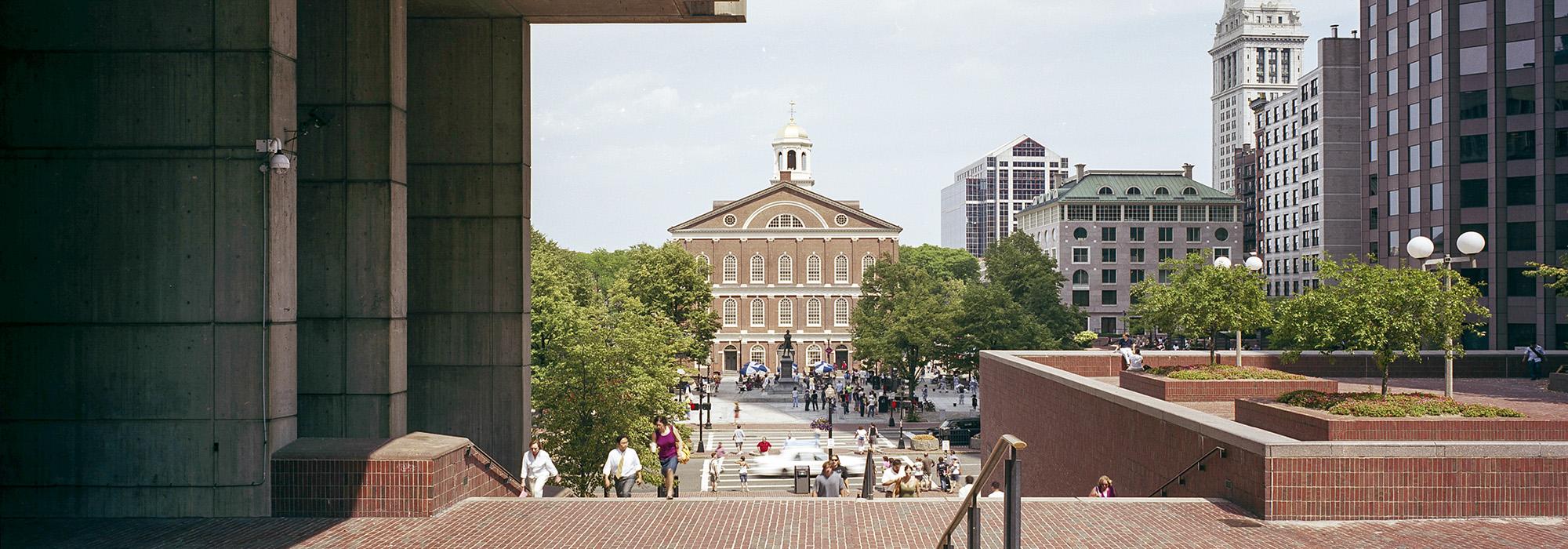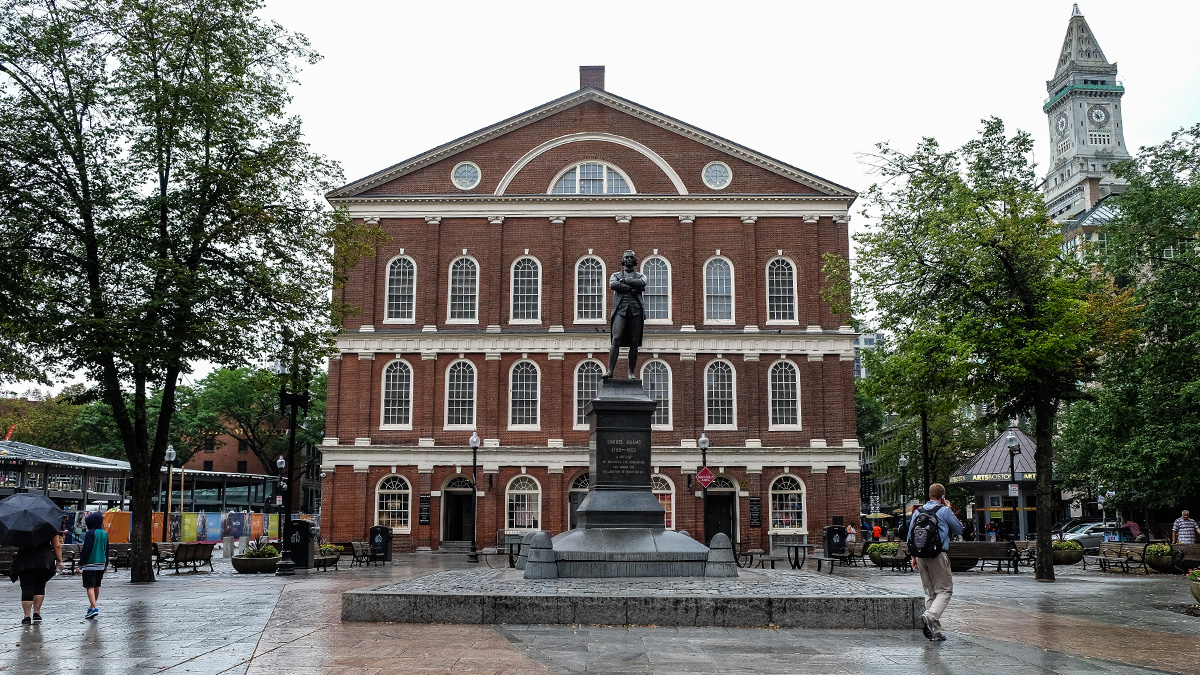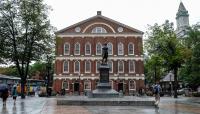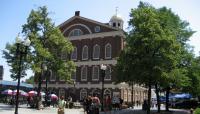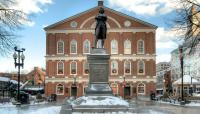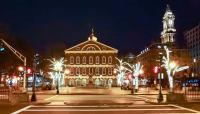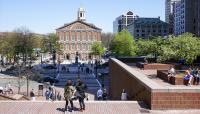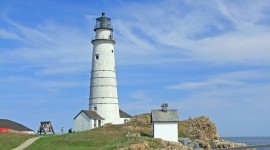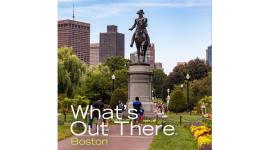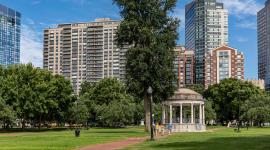Landscape Information
Located in downtown Boston, this red brick building was originally designed by artist John Smibert and has served as a marketplace and meeting hall since its construction in 1742. Peter Faneuil, a wealthy merchant of French descent who strived to create a center of commerce in the colonies, funded its construction. The hall was nearly destroyed by fire in 1761, but was rebuilt with the assistance of a state-authorized lottery and reopened in 1763. It was expanded in 1805-1806 by architect Charles Bulfinch, who added additional floors. Significant events held here include a town meeting in response to the Boston Massacre in 1770, the first meeting to protest the tea tax in 1773, and a toast by George Washington on the first anniversary of the founding of America.
Faneuil Hall is a popular tourist destination, and meetings and events are still hosted in the Great Hall. Entrances are located at the west and east ends of the rectangular-plan building and are accessed via an apron of paved open plazas. The western plaza is patterned in pink and gray granite pavers and sections of brick paving. A Once and Future Shoreline by sculptor Ross Miller was etched into the granite pavers in 1996, marking the original shoreline. The plaza also contains lighting fixtures, benches, picnic tables, planters, and a bronze statue of Samuel Adams (1880) by Anne Whitney. The statue’s lower base and corner posts are of unpolished Quincy granite, while the upper base of the sculpture is of polished Quincy granite. Faneuil Hall was designated a National Historic Landmark in 1960 and listed in the National Register of Historic Places in 1966.



